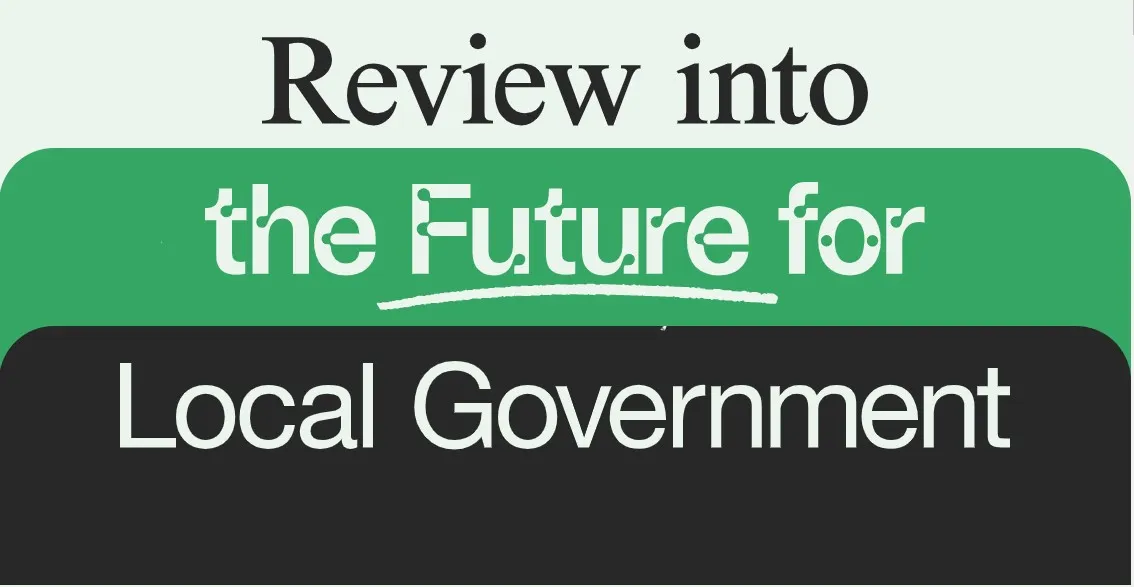Table of Contents
The Review into the Future for Local Government has published its draft report which outlines recommendations to, as they say, “shape a more community-focused, citizen-centred local governance system”. Submissions and feedback are invited to assist with the final report (due June 2023) and must be in before 28 February 2023.
Contrary to the expectations of many, the review does not contain the word amalgamation.
The draft report has 29 recommendations among its 260 pages. As would be expected these days, there is much Maori language in the text so the report contains a glossary to assist the understanding of these words and phrases.
This is where the first alarm bells ring:
We recognise that Te Reo Maori is a taonga that requires protection and nurturing. We acknowledge that terms expressed in this report are highly contextual. The terminology defined in this glossary is relative to the content of this report and are included to support understanding, not be exhaustive in their definition. These translations are subject to constant and necessary debate, and not one that the panel has the authority or intent to remediate within this report.
Review into the Future for Local Govt Draft Report
The outcome from this review is destined to become law in one way or another, as a replacement or update of the Local Government Act 2002. How can one have laws when one does not have a fixed definition of the words within said law? It would become a gravy train for cultural advisors and lawyers.
It seems that the recommendations fall into four broad categories, except for recommendation 16, which has four parts: two excellent and two bad.
- Agree, this is good idea.
- Fine, whatever, sounds like word soup.
- What does this mean? Who is paying?
- No, let’s not go there.
Agree, this is a good idea
Examples here are R17 (Recommendation 17) that the Remuneration Authority looks at the payment for councillors. Apart from the large metro councils, the amount in the hand for serving as a councillor means that one cannot exist only on a councillor pay. This tends to mean that those who have independent means can serve, those with a family to feed and a mortgage to pay cannot. Obviously this skews the pool of people who can afford to stand and serve as councillors.
Could you give up your day job, feed the family and pay the mortgage or rent on these councillor salaries? (Don’t forget that as ‘Schedular Payments’ they are taxed at 33 per cent, regardless of any other income.) Bus drivers now get $30/hour which, for a 40-hour week, means $62,400 pa, and they do not have bus patrons phoning or emailing any day of the week or bundling them up in the supermarket aisle to discuss a bus route problem; unlike councillors, they get to stop driving a bus and knock off.

Another recommendation along these lines is R22, that central government funds the extra demands they place upon local bodies. Long overdue.
Similarly, R25, that central government agencies pay local government rates and charges on all properties. Why should central government get a free ride? Or R24 that new funding mechanisms for Local Government are available.
One part of R16 suggests a four-year local government term. This is a very good idea, but would need to go with a four-year central government term and be offset by two years.
Given the fact that there were a significant number of voting papers not delivered before voting closed, R15, that the Electoral Commission be responsible for overseeing the administration of local body elections, seems a sensible idea.
So yes – there are positives.
Fine, whatever, sounds like word soup
R1: That local government adopts greater use of deliberative and participatory democracy in local decision-making.
R2: That local government, supported by central government, reviews the legislative provisions relating to engagement, consultation and decision-making to ensure they provide a comprehensive, meaningful and flexible platform for revitalising community participation and engagement.
R4: That councils develop and invest in their internal systems for managing and promoting good quality engagement with Maori.
If it floats your boat, then go for it.
What does this mean? Who is paying?
R29: That central and local government considers the best model of stewardship and which entities are best placed to play system stewardship roles in a revised system of local government.
Stewardship of what exactly?
R10: That local government leads the development of coordinated organisational and workforce development plans to enhance the capability of local government to partner and engage with Maori.
So who pays for this? The longsuffering ratepayer?
R5: That central government provides a statutory obligation for councils to give due consideration to an agreed, local expression of tikanga whakahaere (The specific exercise of rituals and practices such as karakia [prayer], whakawatea [exit song], whakatau [welcome ceremony], etc.) in their standing orders and engagement practices, and for chief executives to be required to promote the incorporation of tikanga [the Maori ways of doing things] in organisational systems.
There is no proof that this will improve anything. Is it just white-man tokenism? What exactly is a statutory obligation to give due consideration? By law, you must think about this. Is “OK, I thought about it and decided not to bother” an appropriate and legally acceptable result?
No, let’s not go there
What is wrong with R16 mentioned above? Adopt Single Transferrable Vote as the voting method for council elections and lower the eligible voting age in local body elections to the age of 16.
No one understands STV, and when used in the 2019 Tauranga City Council election it produced some very perverse outcomes, directly contrary to the idea of expanding the representation away from ‘pale, stale, males’.
As for lowering the voting age to 16. What was the review panel smoking when they came up with that idea?
R26: That central and local government explore and agree to a new Tiriti-consistent structural and system design that will give effect to the design principles.
What are the design principles?
Then there are the multiple references to ‘Te Ao Maori values’. This is where things get a little sticky.
All beings within the cosmic family, or whakapapa, are understood to be animated by what is termed mauri, which can be translated to mean ‘life essence’ (Morgan, 2006). Mauri is a vitality that is emanated through a being (eg a human person) as they continually grow and unfold over time (Morgan, 2006). In essence, it refers to the life, health, and vitality of a particular entity, whether a person or a river. For example, the mauri of a river is considered to decline if it is polluted, given that its life-supporting capacity and vibrancy is reduced. Similarly the mauri of a person will decline through exposure to harmful substances that reduce health and vitality
Getting to Know Your Food
This is absolutely the Western world view as well: we simply use different terms to talk about the health of a river – dissolved oxygen, turbidity, pH, parts per million etc. We all accept that a polluted river is not good for the people or the environment so there is really no issue with incorporating the Te Ao Maori worldview here.
Where things get a little difficult with the Te Ao Maori worldview is when we cannot put a pile in a river to support a bridge because of the taniwha that lives in the river, or where the very top of Taranaki cannot be accessed because it is the sacred head of a god. The conflict between Te Ao animism and the Judeo-Christian (and Muslim) view of God is a problematic space.
Even the Maori version of the national anthem would question the multiple gods’ Te Ao worldview.
E Ihowa Atua o nga iwi matou ra
O Jehovah, God of all people
The Jehovah God we sing about in the anthem is none other than the Judeo-Christian God.
And since the term Te Ao Maori cannot be “exhaustive in [its] definition, [having a] translation subject to constant and necessary debate” there are potholes in the road ahead.
In summary, then, the score is:
- Agree, this is good idea. 10.5
- Fine, whatever, sounds like word soup. 8
- What does this mean? Who is paying? 4
- No, let’s not go there. 6.5
As the new font they adopted for the document would suggest, there are a few holes in the recommendations.










